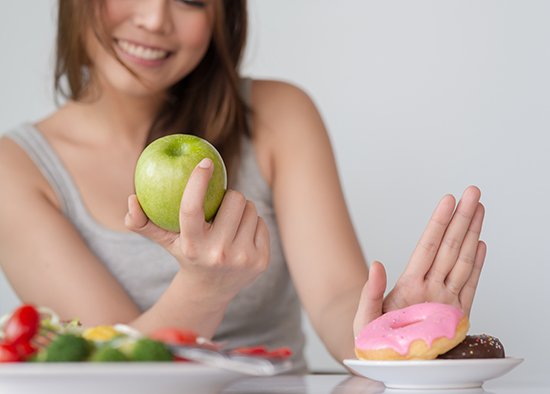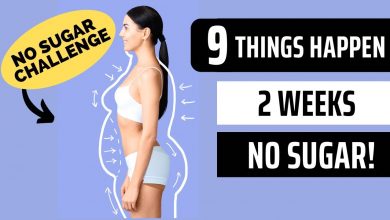No-Sugar Diet: Everything You Need to Know

As health consciousness grows, many people are turning to the no-sugar diet to improve their well-being and control weight. This dietary approach eliminates added sugars and minimizes naturally high-sugar foods, aiming to stabilize blood sugar, reduce cravings, and enhance overall health. In this comprehensive guide, we’ll explore everything you need to know about starting and succeeding on a no-sugar diet.
What is a No-Sugar Diet?
A no-sugar diet restricts the intake of added sugars and, in some cases, naturally sugary foods to reduce the body’s sugar load. It doesn’t mean avoiding all carbohydrates, as carbs are a vital part of a balanced diet. Instead, it focuses on cutting out refined and added sugars commonly found in processed foods.
Types of Sugars
Understanding different sugar types is crucial for anyone starting a no-sugar diet:
- Added Sugars: These include sugars and syrups added to foods during processing or preparation. Common sources include high fructose corn syrup, cane sugar, and agave syrup.
- Natural Sugars: Found naturally in whole foods like fruits and dairy, natural sugars come with fiber and nutrients, making them healthier options than processed sugars.
Benefits of a No-Sugar Diet
Adopting a no-sugar diet offers a range of health benefits, including:
- Enhanced Energy Levels: Consistent energy throughout the day without sugar crashes.
- Improved Heart Health: Lowering sugar intake can reduce blood pressure and cholesterol.
- Weight Control: Limiting sugar helps reduce calorie intake, supporting weight management.
- Clearer Skin: Excess sugar can lead to skin problems, while reducing sugar can improve complexion.
- Stable Blood Sugar: By cutting sugar, we help prevent spikes and crashes in blood glucose levels.
Steps to Start a No-Sugar Diet
1. Identify Hidden Sugars
Many foods contain hidden sugars, even those we consider healthy. For instance, yogurt, salad dressings, and whole-grain bread can contain added sugars. Check food labels for ingredients like:
- High fructose corn syrup
- Glucose or fructose
- Maltose, sucrose, and dextrose
- Cane sugar and cane syrup
2. Eliminate Sugary Beverages
Sodas, flavored coffees, and even fruit juices can be packed with sugar. Opt for water, herbal tea, or coffee without added sweeteners. If you crave something sweet, infuse water with slices of fresh fruit or cucumber.
3. Choose Whole Foods
Whole foods like vegetables, fruits, whole grains, lean proteins, and healthy fats are key to a no-sugar diet. Whole foods are less likely to contain added sugars, allowing us to control our sugar intake better.
4. Make Simple Swaps
Ease into a no-sugar diet by making small changes:
- Swap sugary cereals for oatmeal with berries and nuts.
- Choose plain Greek yogurt and add your own fresh fruit instead of pre-flavored yogurts.
- Use natural spices like cinnamon or nutmeg for flavor without added sugar.
Foods to Avoid on a No-Sugar Diet
Certain foods are often high in sugar and should be avoided or minimized:
- Sugary Beverages: Soda, sweetened teas, and energy drinks.
- Processed Snacks: Many granola bars, protein bars, and chips contain added sugar.
- Baked Goods: Cakes, pastries, muffins, and cookies are typically high in both sugar and refined carbohydrates.
- Condiments and Sauces: Ketchup, barbecue sauce, and salad dressings can have surprising amounts of added sugar.
Foods to Include on a No-Sugar Diet
Focusing on whole, nutrient-dense foods is the cornerstone of a no-sugar diet. These include:
- Vegetables: Leafy greens, bell peppers, broccoli, and cucumbers are all low in sugar.
- Fruits: Opt for fruits like berries, apples, and citrus, which are lower in sugar than tropical fruits.
- Whole Grains: Quinoa, oats, brown rice, and barley provide fiber without added sugars.
- Proteins: Chicken, fish, eggs, tofu, and legumes offer protein without sugar.
- Healthy Fats: Avocados, nuts, seeds, and olive oil are great for satiety and add flavor to meals.
Sample No-Sugar Meal Plan
Here’s a one-day no-sugar meal plan to help you start your journey:
Breakfast
- Plain Greek yogurt topped with fresh berries, chia seeds, and a sprinkle of cinnamon.
Lunch
- Salad with mixed greens, grilled chicken, bell peppers, cucumbers, and a homemade olive oil vinaigrette.
Snack
- A handful of almonds or apple slices with a spoonful of almond butter (unsweetened).
Dinner
- Grilled salmon with roasted Brussels sprouts and a side of quinoa.
Dessert
- Freshly sliced strawberries or a few pieces of dark chocolate (80% cocoa or higher).
How to Manage Sugar Cravings
Reducing sugar can lead to cravings, especially at the start. Here are strategies to overcome them:
- Drink Water: Dehydration can sometimes mimic hunger, so drink water throughout the day to help manage cravings.
- Eat Balanced Meals: Include protein, fiber, and healthy fats in each meal to stay full longer and stabilize blood sugar.
- Get Enough Sleep: Poor sleep often leads to sugar cravings as the body seeks quick energy. Aim for 7-8 hours each night.
Natural Sweeteners: Are They Allowed?
While a no-sugar diet limits added sugar, some natural sweeteners are often used as alternatives:
- Stevia: A plant-based sweetener with zero calories.
- Monk Fruit: Another calorie-free sweetener with no impact on blood sugar.
- Coconut Sugar: Although it’s still a sugar, it has a lower glycemic index than regular sugar.
These should still be used sparingly, as they can sometimes lead to further cravings for sweets.
Tips for Long-Term Success on a No-Sugar Diet
- Set Realistic Goals: Start with manageable changes, like cutting out sugary beverages before eliminating all added sugars.
- Track Your Progress: Use a food journal to track what you eat, monitor sugar intake, and celebrate small wins.
- Plan Your Meals: Planning ahead helps reduce the chances of reaching for sugary snacks.
- Find Support: Join a community or enlist a friend for mutual encouragement and recipe sharing.
Common Mistakes to Avoid
1. Over-Reliance on Packaged “No-Sugar” Foods
Many packaged foods labeled as “no sugar” or “sugar-free” still contain artificial sweeteners or hidden ingredients. Always check the label.
2. Skipping Meals
Skipping meals often leads to intense sugar cravings, as the body looks for quick energy. Eat regular, balanced meals to avoid these temptations.
3. Giving Up Too Soon
The first few days on a no-sugar diet can be challenging due to cravings and potential side effects, such as fatigue or irritability. Stick with it, as these symptoms usually pass within a week or two.
Expected Results of a No-Sugar Diet
By following a no-sugar diet, we can expect positive changes in physical health, mental clarity, and emotional well-being. Common benefits include reduced bloating, clearer skin, improved mood stability, and a lowered risk of developing chronic diseases like diabetes and heart disease.








